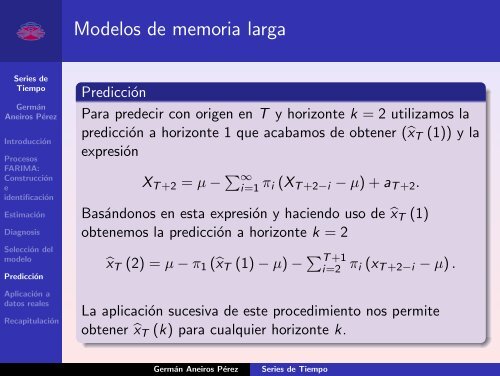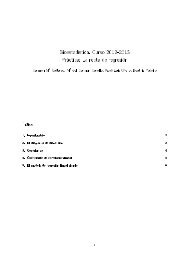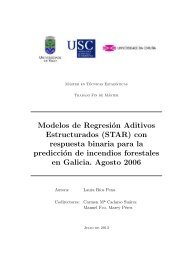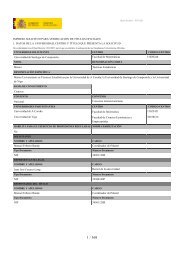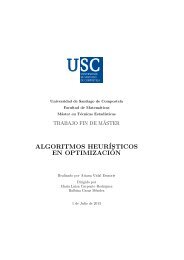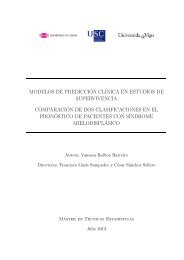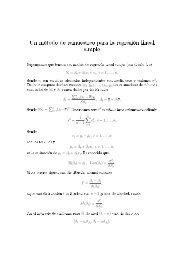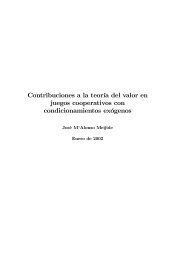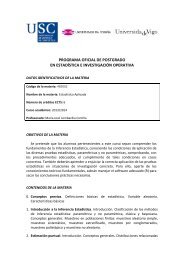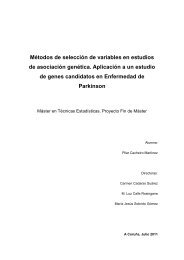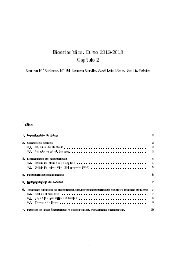You also want an ePaper? Increase the reach of your titles
YUMPU automatically turns print PDFs into web optimized ePapers that Google loves.
Mo<strong>de</strong>los <strong>de</strong> memoria larga<br />
<strong>Series</strong> <strong>de</strong><br />
<strong>Tiempo</strong><br />
Germán<br />
Aneiros Pérez<br />
Introducción<br />
Procesos<br />
FARIMA:<br />
Construcción<br />
e<br />
i<strong>de</strong>ntificación<br />
Estimación<br />
Diagnosis<br />
Selección <strong>de</strong>l<br />
mo<strong>de</strong>lo<br />
Predicción<br />
Aplicación a<br />
datos reales<br />
Recapitulación<br />
Predicción<br />
Para pre<strong>de</strong>cir con origen en T y horizonte k = 2 utilizamos la<br />
predicción a horizonte 1 que acabamos <strong>de</strong> obtener (̂x T (1)) y la<br />
expresión<br />
X T +2 = µ − ∑ ∞<br />
i=1 π i (X T +2−i − µ) + a T +2 .<br />
Basándonos en esta expresión y haciendo uso <strong>de</strong> ̂x T (1)<br />
obtenemos la predicción a horizonte k = 2<br />
̂x T (2) = µ − π 1 (̂x T (1) − µ) − ∑ T +1<br />
i=2 π i (x T +2−i − µ) .<br />
La aplicación sucesiva <strong>de</strong> este procedimiento nos permite<br />
obtener ̂x T (k) para cualquier horizonte k.<br />
Germán Aneiros Pérez<br />
<strong>Series</strong> <strong>de</strong> <strong>Tiempo</strong>


